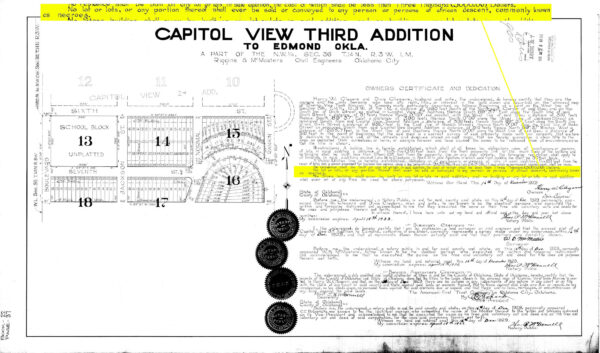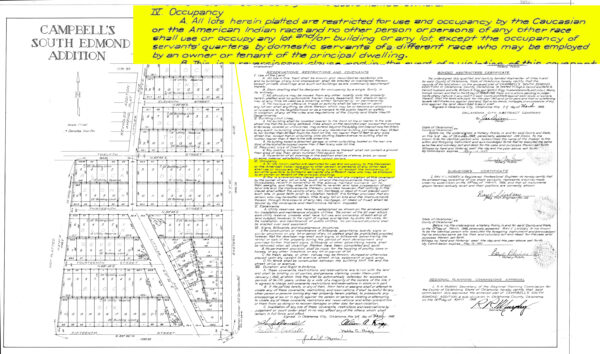Jim Crow Laws In Edmond
In the late 19th and early 20th centuries, many states passed laws that mandated the separation of African Americans and whites in public facilities, which were often referred to as “Jim Crow laws” after a well-known minstrel character that portrayed African Americans as foolish and reinforced racists stereotypes. The push for separating the races was validated by a Supreme Court decision in 1896, Plessy vs. Fergusson, which allowed for separate facilities as long as they were “equal.” These laws were especially prevalent in the south, though not exclusive to the region, and impacted all aspects of public life. Originally, segregation in Oklahoma schools was optional, but over time, territorial and state legislature would pass a number of Jim Crow laws.
“Probably no other state or territory has built a stronger barrier against mixed schools.”
Quote from an article in the December 13, 1905 edition of the Edmond Sun mentioning previous Jim Crow legislation in Oklahoma territory that passed in 1901.
By the time of Oklahoma’s constitutional convention in 1906, racist and pro-southern sentiment had grown to be a sizable force in the territory. The issue of Jim Crow was kept out the state constitution, but was done so out of fears it would jeopardize statehood. After statehood was granted, the very first bill proposed was one that required segregation on all public transportation. Despite the powerful opposition from African American political leaders, the bill was passed by a vast majority of delegates.
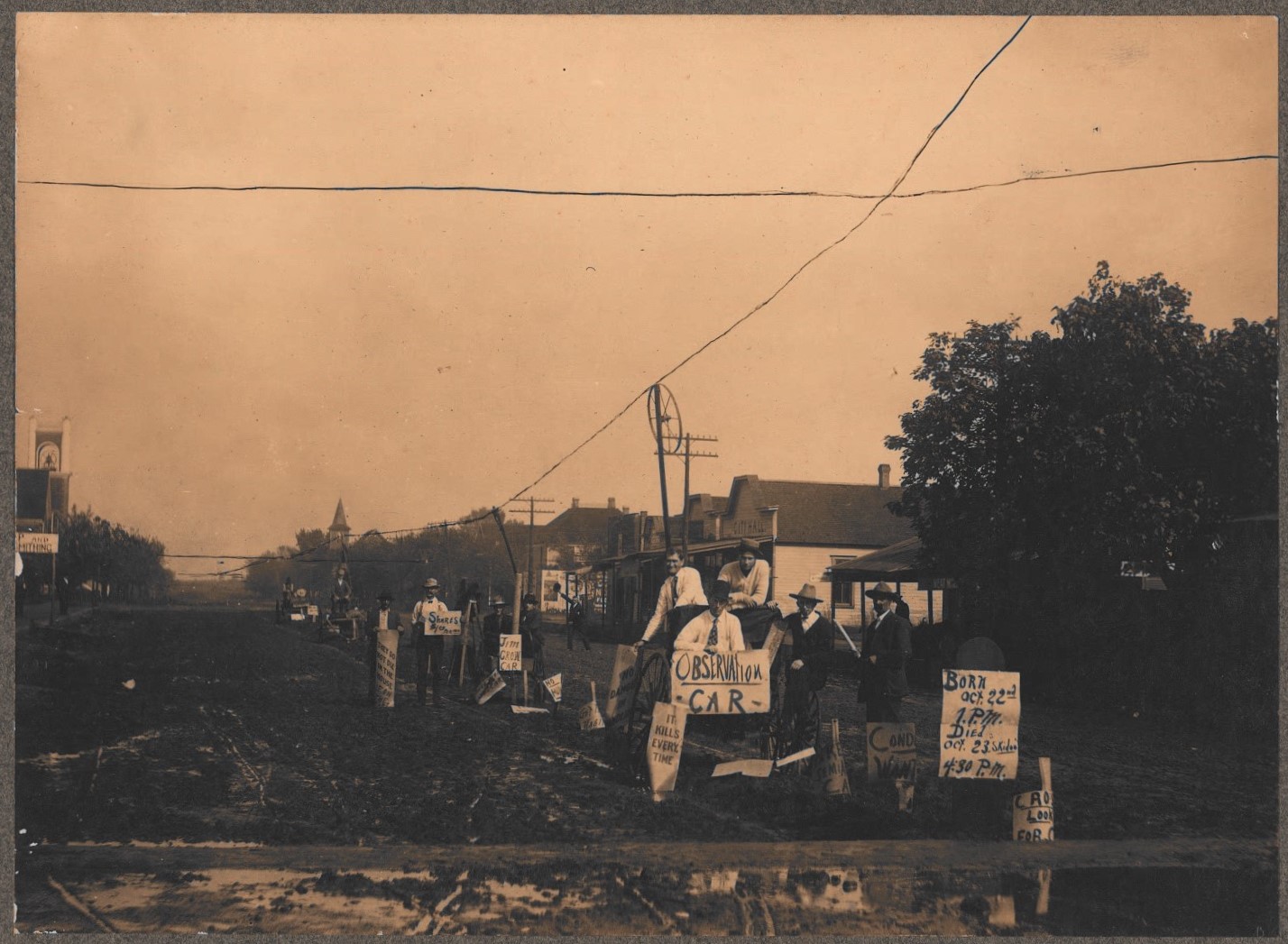
In 1908 Edmond citizens raised $15,000, through $100 subscriptions, to pay for the extension of Oklahoma City’s urban trolley to Edmond. The trolley didn’t arrive until May 29, 1911, much to the dismay of residents who are captured in this photo demonstrating their frustration with the delays. Notably included is a “Jim Crow” car near the center of the photo.
“Edmond now has a full-fledged Jim Crow. The separate waiting room for negroes was opened last week.”
From the local news section of the May 22, 1908 edition of the Edmond Twice-a-Week Enterprise.
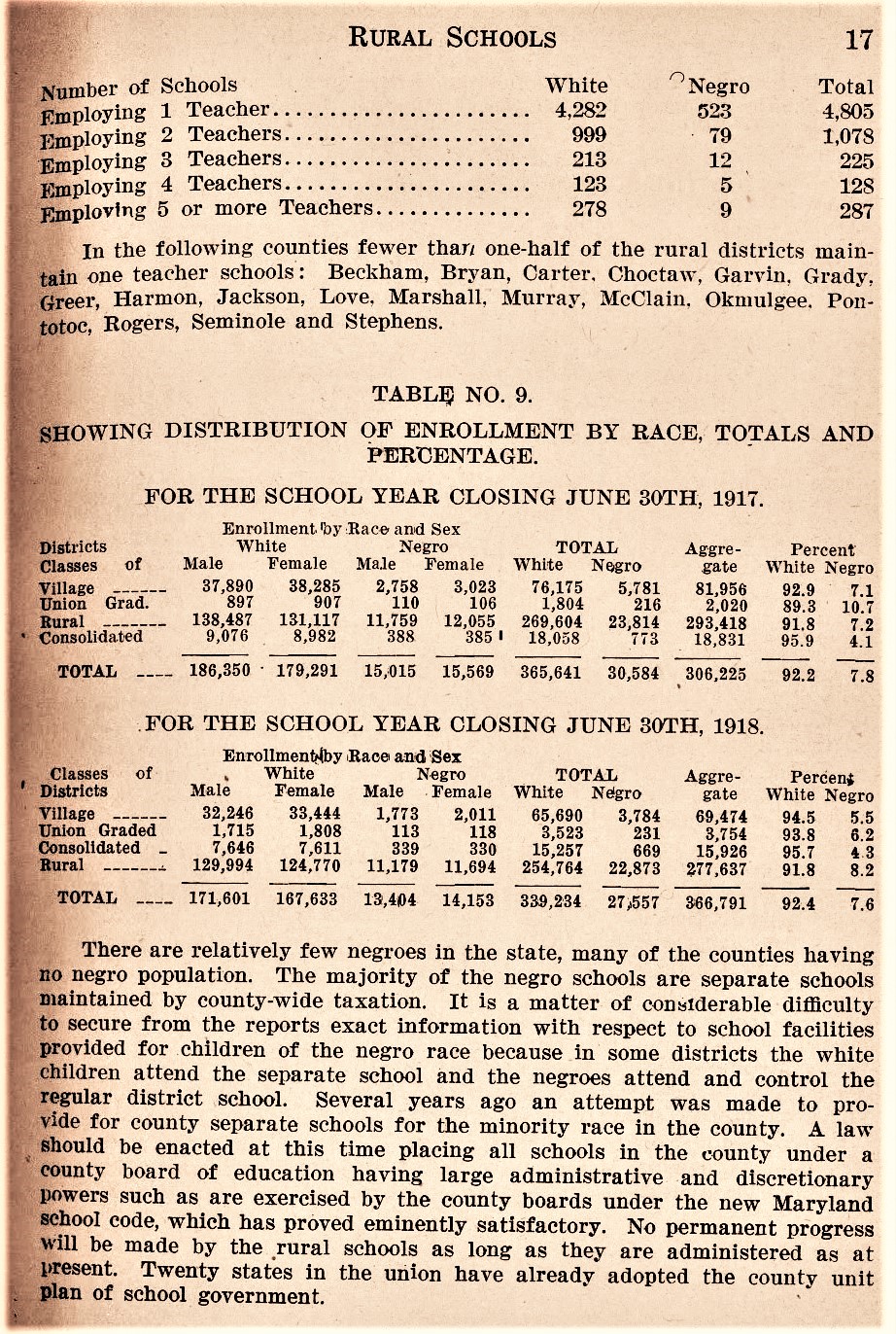
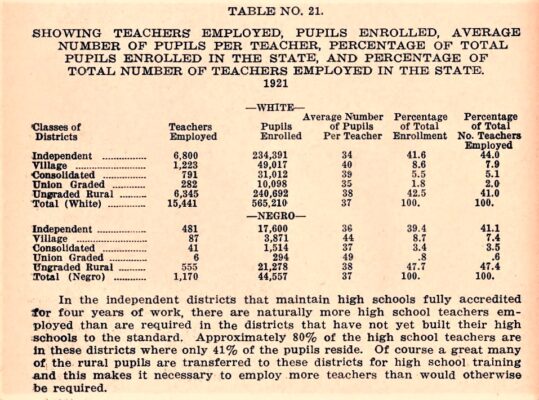
These reports on schools throughout Oklahoma provided detailed information on the student population and the types of schools that were being attended. The 1918 report discusses the distribution of students in rural schools that were administered directly by the State Superintendent in the excerpt displayed above.
The 1922 report includes a comparison of schools serving the varied student populations, which shows that spending for students in independent districts, such as Edmond, was significantly higher than spending for students in rural schools. With the closure of Edmond’s separate school in 1905, all African American students in the areas surrounding Edmond attended rural schools.
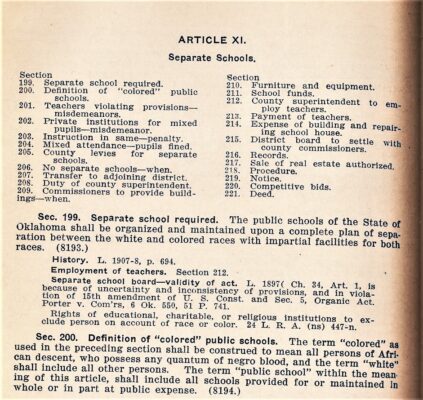
Article XI of the Oklahoma School Laws addresses all aspects of the creation of separate schools, from the hiring of appropriate teachers to fines and penalties for not following the law.
Racially Restrictive Covenants
Racially restrictive covenants were used nationwide in an attempt to prevent African American families and other people of color from owning or even renting a home in white communities. Racially restrictive covenants could be found in plats of housing additions and individual property deeds; addition plats are detailed maps for specific neighborhoods that show how the land of a specific housing addition is divided, as well as all the legal information such as lot boundaries, streets, and blocks. Covenants and restrictions for additions are usually found on the same page as the plat map or on a secondary page. These covenants and restrictions often include the minimum or maximum size of a house, how close a house can be to the lot line, how the property may be used, and any easements on the property. Racially restrictive covenants contractually prohibited the purchase, lease, or occupation of a piece of property by a specific group of people, usually African Americans. Nationally, these restrictive covenants were in use as early as the first part of the twentieth century and became more and more prevalent from the 1920s until 1948 when the Supreme Court ruled that enforcement of these covenants violated the Equal Protection Clause of the 14th Amendment.
The first housing addition platted in Edmond to include a racially restrictive covenant was the Highland Park Addition in 1907. Aside from Edmond Highway Addition in 1924, every addition platted in Edmond from 1911 until 1949 contained a racially restrictive covenant.
United States Supreme Court Case, Shelley v. Kraemer, 1948
The practice of racially restrictive covenants was ended with the Supreme Court Shelly v. Kraemer, which was decided in 1948. In 1945, an African American family unknowingly purchased a home in St. Louis that contained a racially restrictive covenant prohibiting non-white families from owning the property. Neighborhood residents sued in an attempt to block the Shelley family from purchasing the home. Ultimately the Shelley family won the case, with the Supreme Court ruling that while private parties may voluntarily choose to follow the covenant, a state could not enforce the covenant. Enforcement of the covenant would violate the Equal Protection Clause of the 14th Amendment which stated that a state cannot “deny to any person within its jurisdiction the equal protection of the laws.”
In 1968, the Fair Housing Act was enacted under President Lyndon B. Johnson, which made it illegal to refuse to sell or rent property to any person because of their race, color, or religion. In 1974, sex was added to the list. Disability and family status were added in 1988.

